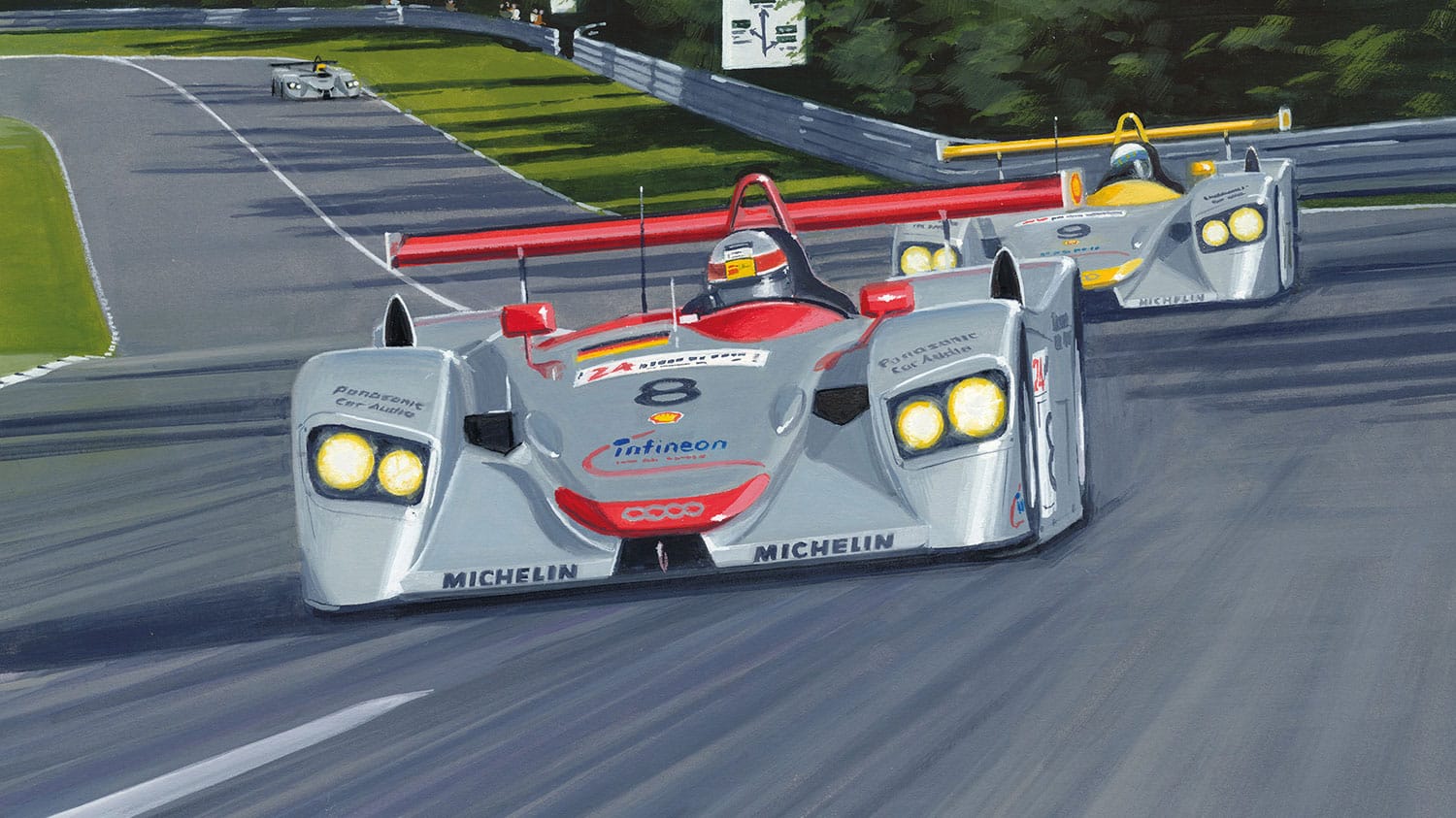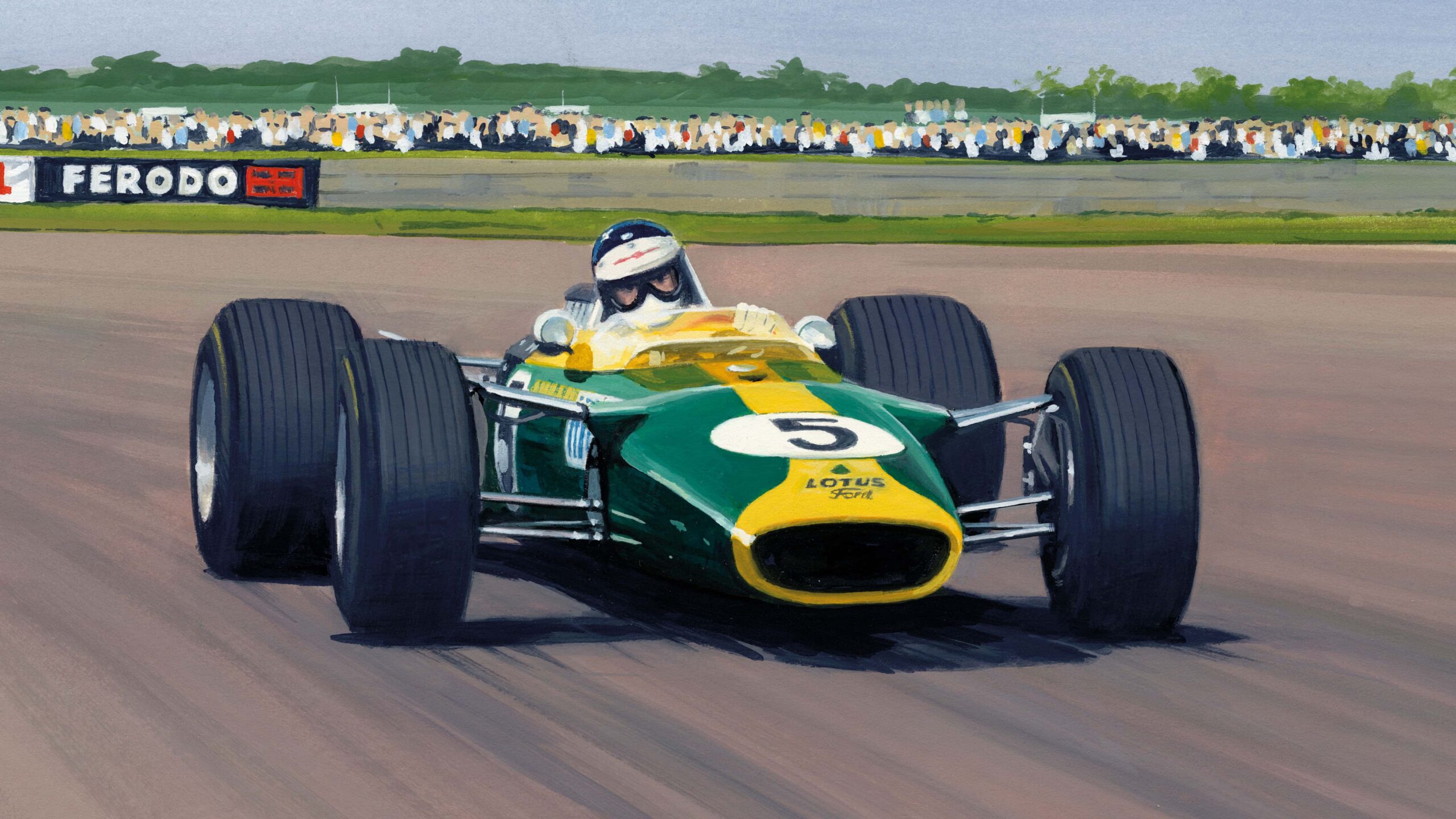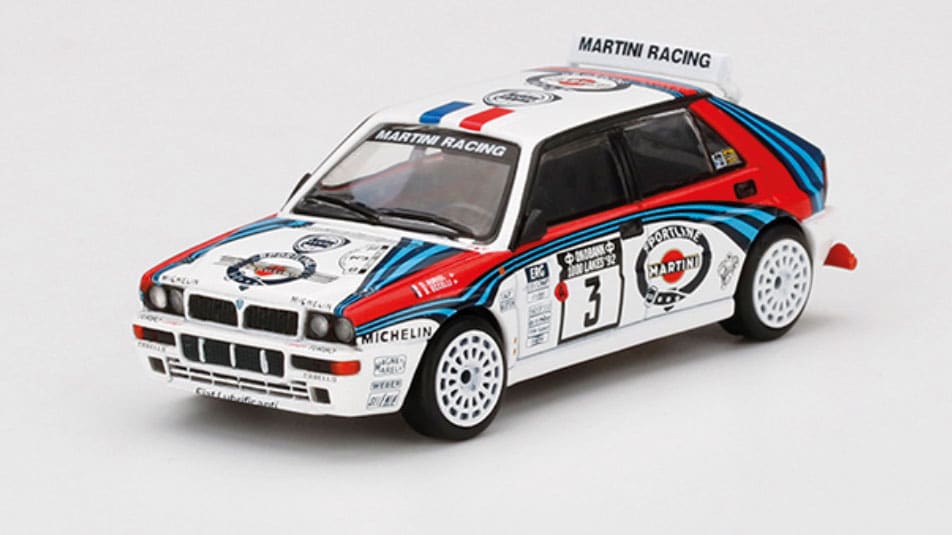The finish line is in sight…
Artist Martin Tomlinson has recreated each candidate of our Race Car of the Century. Here he reveals his final two from the ten-car shortlist

Martin Tomlinson
It’s been a feat of endurance. One that’s taken months. But finally renowned motor sport artist Martin Tomlinson has completed the full set of our Race Car of the Century artworks, capturing each of the 10 candidates in unique snapshots, all of which are available to buy through the Motor Sport shop either as prints or the coveted original paintings.
Although we know which machine has been crowned Race Car of the Century by Motor Sport readers, it would be remiss of us not to complete the stories behind all 10 artworks here.

The final two additions – Audi’s all-conquering R8 sports car and the Red Bull RB9 that dominated the 2013 Formula 1 season – represent the two most modern offerings, and were the hardest to create.
“When you get into painting cars like these you realise how complex they are,” says Tomlinson, who confesses to spending days just trying to replicate the shapes and finer details on each subject. “There’s so much signage to recreate, especially on the Red Bull, that you need to become a skilled signwriter to replicate the car well, and that’s before you get stuck into elements such as the colours and the more fiddly contours and details.”
Starting with the Audi, which changed the face of sports car racing after its arrival in 2000 – achieving a 1-2-3 finish at Le Mans before going on to conquer the great race five times –Tomlinson’s version depicts the trio of cars from 2000, with Tom Kristensen out in front, ahead of Allan McNish and the distinctive yellow helmet of the much-missed Michele Alboreto in the background.
“I found the Audi one of the more demanding cars to capture, and it’s actually the only one where it took me two tries to get it right,” says Tomlinson. “The composition of the first piece just wasn’t right so I scrapped it after about a day and a half and opted to start again. This isn’t based on a single photo. It’s a collection of images to get the cars into a line with breathing space between them.
“The R8s never wore really detailed liveries but being plain silver they were a challenge as there’s no such thing as silver paint! Mine is a mixture of white, grey and sky blue, which gets the tone right and then I used highlights to give the bodywork that distinctive shine. There wasn’t much debate about which driver would be in the lead car… it had to be ‘Mr Le Mans’ Tom Kristensen as he’s just synonymous with Audi’s success during that period.”
Unsurprisingly, the single artwork that took the most time was the Red Bull F1 car, being the complex piece of kit that it is. “The front wing alone took me hours,” admits Tomlinson. “It was one of those projects where you had to do a bit, then walk away from it to come back with fresh eyes to check everything was on the right path as each part is so intricate. I also chose to paint it from a three-quarter angle, as opposed to side-on, purely as I thought it gave a better view of the car because you can see the suspension working and the tyres graining.
“It did make it much harder though as it warps the shapes of the signage as they wrap around the curves of the body, rather than being the quite simple shapes when you see them in full on the side.”
Naturally, 2013 world champion Sebastian Vettel is installed, with the car at Monza with a plain green background that both gives a feeling of speed but also contrasts against the detail in the car itself.
Prints and paintings of the R8 and RB9, and the other eight candidates, are at the Motor Sport shop, from £120

RACE CAR OF THE CENTURY 1st place: LOTUS 49
The votes have been counted for Motor Sport’s Race Car of the Century – and it’s the Lotus 49 that captured your hearts. The 49 first appeared in 1967, with Jim Clark handling the Cosworth DFV-powered beauty to victory in the Dutch GP. It would enjoy a four-season life, contributing to two constructors’ world titles for Lotus plus drivers’ crowns for Graham Hill and (partly) Jochen Rindt. The artist chose to capture the 49 at Silverstone with Clark on his way to victory in the 1967 British GP. “The cars of this era were just wonderful, with great colours and no real sponsorship,” says Tomlinson. “The shapes were glorious and it was a real golden era for F1. When choosing a driver, it could only be Jim.”

The expert view
Small is beautiful
One recent trend I’ve spotted in the collectibles market is the rise of 1:64-scale miniatures. I reckon they’re a great tip for the future.
We’re not talking strictly about Hot Wheels and such here. While they are doing great things, I’m more focusing on the upper end of the market, where there are some super-high-quality gems to be found. In recent years a lot of the premium model makers like Minichamps, Spark, Majorette and TSM’s Mini GT, have expanded into 1:64 versions.
They’re not only great pocket-sized items that are easy to buy and great to look at, but they’re also first rate with most having opening doors, bonnets and boots. They’re also easy to sell – a recent trip to the WEC at Spa proved interesting as I watched people buying 1:18 and 1:43 models, and slipping an extra 1:64 into the bag as a little bonus.

The explosion of interest in these models has been driven by the ‘coin-op’ trend in Japan where you can get a huge range of model cars from vending machines and they form a collectible series, much like trading cards or stickers albums. People go mad for them, and the rarer ones can change hands for vastly inflated sums.
Keep an eye on Mini GT. Not only is it bringing out themed series but it’s also packaging them cleverly. Within the plastic blister pack you get the model and a presentation box, so the entire thing can be kept pristine, even if you open it. I can see some of these becoming highly collectible as they only ever make limited runs and over time they’ll get damaged or lost. Its Matchbox for the modern age.
By far the best thing about the 1:64 movement is they can be displayed anywhere and their low price makes them more accessible than costlier 1:43s, which can reach £80 or more. As always, buy what you enjoy, not just to invest – but I reckon the best-cared-for ones could become items to watch in a few years.
Andrew Francis is director at The Signature Store. thesignaturestore.co.uk
